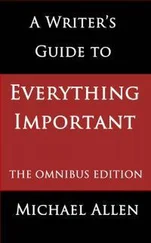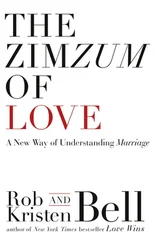Recently Bono, lead singer of the band U2, was interviewed by Bill Hybels, pastor of Willow Creek Church in Barrington, Illinois, about bringing heaven to earth:
Hybels:I read somewhere that when you say the Lord’s Prayer, there’s one phrase that really grips you; which one is it?
Bono:“Thy kingdom come on earth as it is in heaven.”
Hybels:And why? Why does that one grab you?
Bono:Because a lot of people are happy with pie in the sky when they die, but I don’t think that is what, um, is our purpose. Our purpose is to bring heaven to earth in the micro as well as the macro. In every detail of our lives, we should be trying to bring heaven to earth. Have the peace that passeth understanding at of the center of yourself, but do not be at peace with the world because the world is not a happy place for most people living on it. And the world is more malleable than you think, and we can wrestle it from fools. [3]
The idea that heaven is not a place out there that we will arrive at some day, but a reality we encounter now is at the heart of what Rob is writing about in Love Wins. How do we “bring heaven to earth,” as Bono enjoins us? For many, being so steeped in an old model for heaven, this idea of heaven takes some getting used to. To help, we have included a Bible study on the heavenly visions from Isaiah, showing just how earthly these visions were.
Another teacher who helps us with this project is Bible scholar and bishop N. T. Wright. In an excerpt from a forthcoming book, How God Became King, Wright explains how seeing Jesus as teaching primarily about how we can get to heaven is one of the main reasons we cannot see the main story and themes of the Gospels.
Our ideas have consequences, and our beliefs about the last things shape how we live. If we want to participate actively in the ordering of creation with God (see Rev. 20), we must embrace a new idea of what heaven is and how close it is to our lives right here, right now.
Bible Study: Earthly Heavenly Visions
Once we remove our filters that only allow us to see heaven as a place we go to after leaving this world, we are then able to rediscover the rich narratives of the heavenly yet earthly future visions of the prophets. A selection of passages from Isaiah are listed below. As you read these selections, notice the following: Where is God dwelling? Who is present there? What animals and things are listed as present? What are concrete signs that the day of the Lord has arrived? How do these images fit with how you think of heaven?
In the last days
the mountain of the LORD’s temple will be established
as the highest of the mountains;
it will be exalted above the hills,
and all nations will stream to it.
Many peoples will come and say,
“Come, let us go up to the mountain of the LORD,
to the house of the God of Jacob.
He will teach us his ways,
so that we may walk in his paths.”
The law will go out from Zion,
the word of the LORD from Jerusalem.
He will judge between the nations
and will settle disputes for many peoples.
They will beat their swords into plowshares
and their spears into pruning hooks.
Nation will not take up sword against nation,
nor will they train for war anymore. (2:2–4)
The wolf will live with the lamb,
the leopard will lie down with the goat,
the calf and the lion and the yearling together;
and a little child will lead them.
The cow will feed with the bear,
their young will lie down together,
and the lion will eat straw like the ox.
Infants will play near the hole of the cobra;
young children will put their hands into the viper’s nest.
They will neither harm nor destroy
on all my holy mountain,
for the earth will be filled with the knowledge of the LORD
as the waters cover the sea. (11:6–9)
On this mountain the LORD Almighty will prepare
a feast of rich food for all peoples,
a banquet of aged wine—
the best of meats and the finest of wines.
On this mountain he will destroy
the shroud that enfolds all peoples,
the sheet that covers all nations;
he will swallow up death forever.
The Sovereign LORD will wipe away the tears
from all faces;
he will remove his people’s disgrace
from all the earth.
The LORD has spoken. (25:6–8)
You will go out in joy
and be led forth in peace;
the mountains and hills
will burst into song before you,
and all the trees of the field
will clap their hands.
Instead of the thornbush will grow the juniper,
and instead of briers the myrtle will grow.
This will be for the LORD’s renown,
for an everlasting sign,
that will endure forever. (55:12–13)
Discussion Questions
1 Rob remembers his grandmother’s painting of heaven as a floating, glimmering city. What is your vision of heaven? What factors have shaped this vision?
2 How does the perception of our lives and our church change when we think of heaven as a restored earth rather than as a faraway place?
3 If Jesus consistently focused on heaven for today, why do we so emphasize heaven after we die?
4 Rob describes the Christian life as our preparation to become the kind of people who can dwell in heaven. How does this reorient how we shape our lives?
5 What is the connection between our understanding of heaven and how we live our lives?
6 In Matthew 19 when the rich man asks Jesus about “eternal life,” what do you think the man had in mind? What might Jesus mean by the term? What does “eternal life” mean to you?
7 If to “reign” with God means to “participate” with him in his creation, how might this inform our understanding of our calling in this life?
8 What does it mean that “eternal life” is available to us right here, right now?
Reading Going to Heaven? by N. T. Wright
Rob argues that we misunderstand what Jesus meant by “eternal life”; it is not, he says, simply code for going to heaven after we die. In his forthcoming book, How God Became King: The Forgotten Story of the Gospels (HarperOne), leading New Testament scholar N. T. Wright maintains that we have missed the central theme of the Gospels, because we have projected our own themes onto the text to explain what Jesus’s main teaching was. One of the misinterpretations he writes about is the idea that Jesus was primarily concerned with who goes to heaven and how (and who does not).
What have the churches normally done with “the middle bits” [of Jesus’s life, the time between his birth and his death]? I have on occasion challenged groups of clergy and laity to tell me what they, or their congregations, might say if asked what “all that stuff in the middle” was about. What was the point, I have asked, of the healings and feastings, the Sermon on the Mount and the controversies with the Pharisees, the stilling of the storm and Peter’s confession at Caesarea Philippi, and so on and so on—all the mass of rich material that the gospels offer us between Jesus’s birth, or at least his baptism, and his trial and death? Pastors and preachers reading this book might like to ask themselves: If you asked your congregations about this, what do you think they would say? What, indeed, would your congregation expect you to say the gospels were all about?
The answers I have received have been revealing. The church’s tradition has offered four forms of answer. None of them, I think, corresponds very closely to what the four gospels actually talk about. The first inadequate answer is that Jesus came to teach people how to go to heaven. This is, I believe, a major and serious misunderstanding.
Читать дальше












